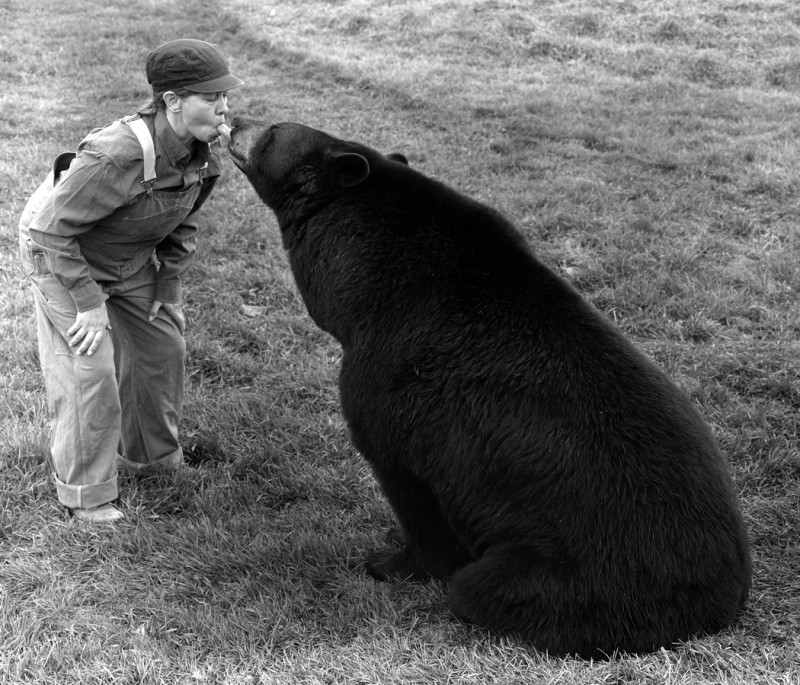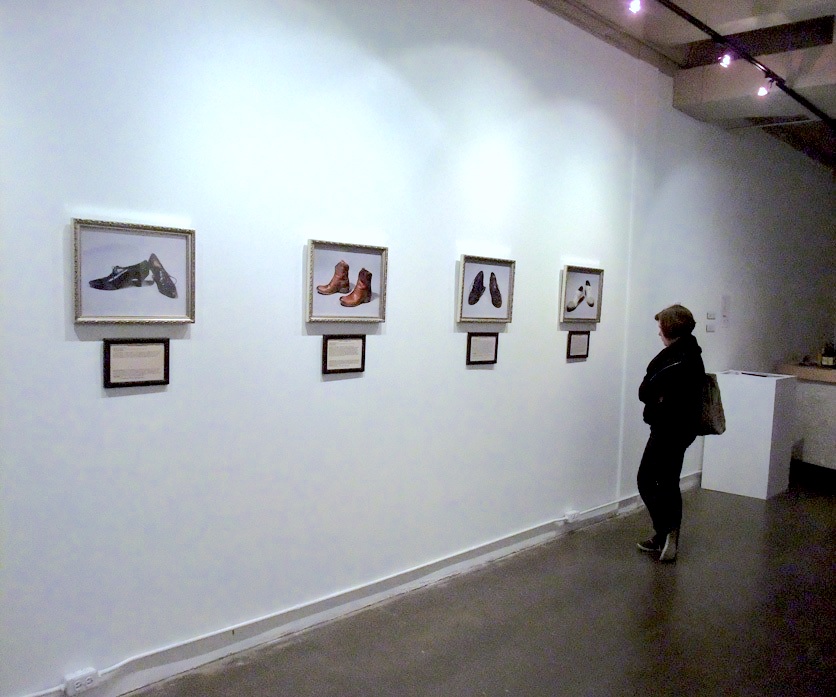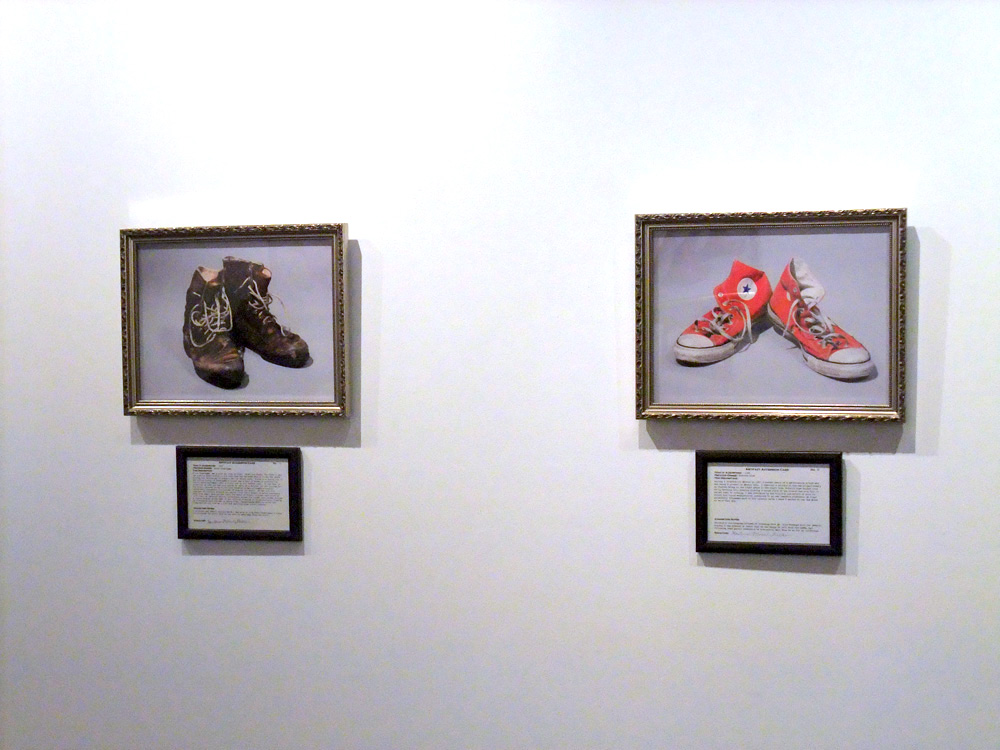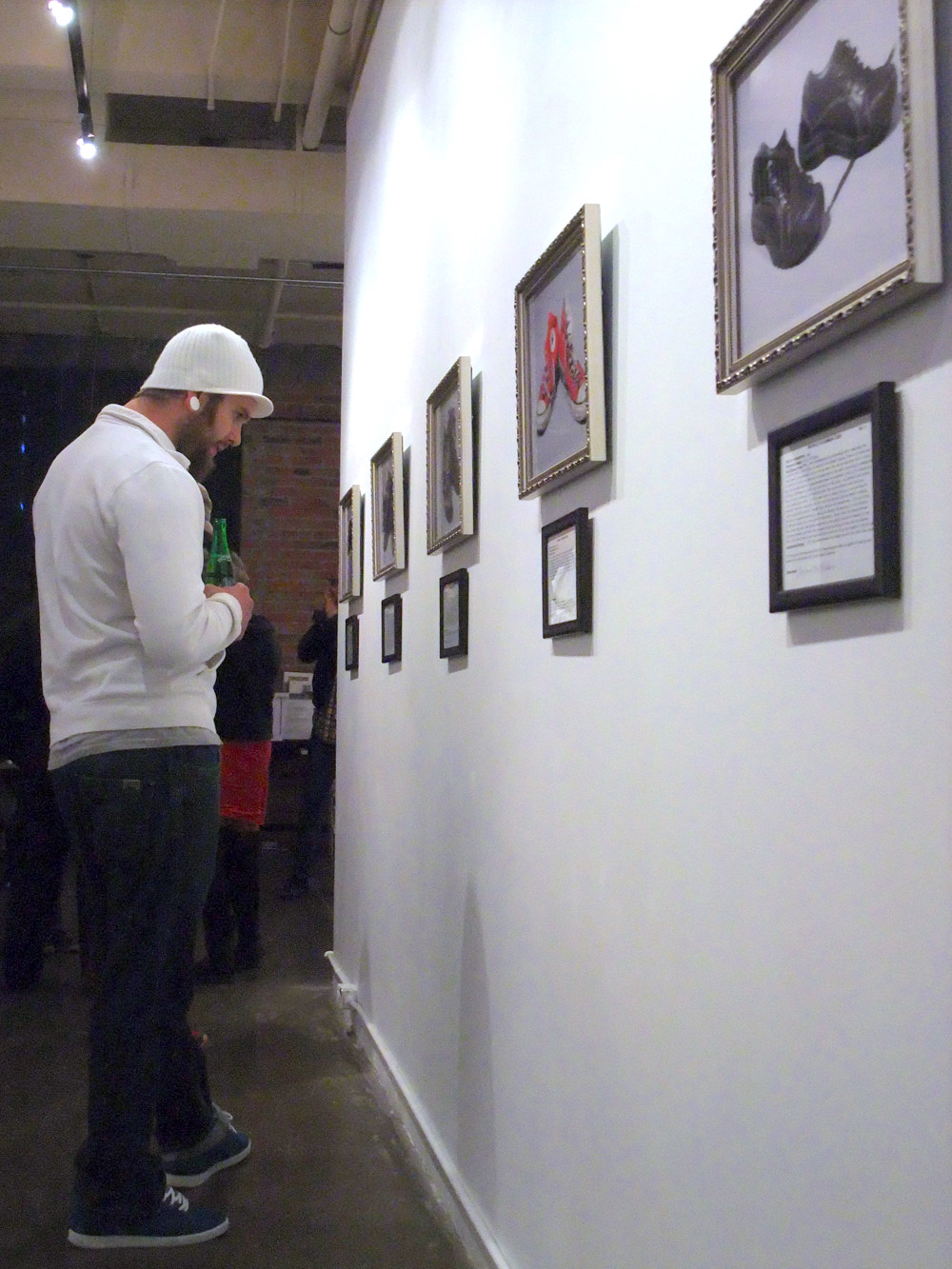MAINSPACE EXHIBITION /

The Shoe Collection of Hortense Muriel Walker & The Other
Kay Burns
October 12 to November 10, 2012
Kay Burns is a multidisciplinary artist based in Newfoundland. She is involved in the creation of performance art, photography, locative media, audio, video, and installation. Her art work has been presented at venues internationally including New York, Reykjavik, Amsterdam, Belfast, and Los Angeles; as well as at numerous galleries and festivals across Canada from Dawson City, Yukon to St. John’s, Newfoundland. She was a curator for 5 years at the Muttart Public Art Gallery in Calgary, and she taught for 10 years through the University of Calgary Art Department and the Alberta College of Art and Design Media Arts Department prior to her move to Newfoundland.




Much of my artwork, in all media, involves a somewhat elastic approach to the inclusion of fact and fiction. For several years I have explored ideas related to the creation of and enactment of alternative identities. Many of my performance art projects have been undertaken as an alternative persona, Iris Taylor, ethnographer and historian. Underpinning my performance work as Iris are questions of identity – what constitutes identity, how identity evolves, the malleability and flux of identity, and the interplay between my own identity and that of my fictional ‘other.’
Within each of the 2 photo-based installations at TNG, different concepts are explored that pertain to outsider and/or marginalized identities. The installations are presented as the collected documentation and materials of an anonymous archivist. The archivist is an ageless, nameless, genderless, timeless, institution-less, individual. Through these installations, broad questions surface regarding the impetus to collect, to archive, to annotate, to scrutinize the lives of others and to make them public in a curious way. The archivist is fictional, as are numerous aspects of the content of the installations themselves, alluding to questions of who defines the truth within museum and archival contexts.
The Shoe Collection of Hortense Muriel Walker is presented as the archivist’s collection of photos representing the de-accessioned collection of shoes with curious histories that was assembled by Hortense Walker (thus a collection of a collection).
The Other is a project that explores the notion of identities nested within identities. History offers evidence of women who lived convincingly as men for decades. In a series of performative photographic tableaux I have ‘performed’ several identities of women-performing-as-men, recorded through B&W photography. Through darkroom processes I have sought to make the photographs look old, augmented through their presentation in antique frames accompanied by the authoritative voice of the archivist within the didactic materials.
kayburns.ca/
Double Standard
“The collection is a form of art as play, a form involving the reframing of objects within a world of attention and manipulation of context.”[1]
Like the personal histories that make up the annotation cards and didactics that accompany this collection of photographs, this observation is also not definitive. Instead the focus on the doubling or pairing of images and objects constitutes a shift in thinking about both identity and subjectivity. By witnessing the enactment of these alternative and multiple identities, Kay Burns invites us into the marginalized worlds of all 32 characters [2] in this drama. We are requested to suspend our disbelief and allow each to tell their own version before we decide what is real, what is authentic, and what purpose, if any, truth may serve.
Stereography, the optical illusion of combining two into one by placing a metal instrument up to your eyes, was, revolutionary for its time, not only because it promised the sensation of depth, but also promised the experience in isolation. A private, cinematic moment in which the world was blocked out by the very machine that offered the escape. As one passionate advocate of stereography noted in 1861, “ a dream like exaltation, in which we seem to leave the body behind us and sail away into one strange scene after another, like dismembered spirits.”[3] The power of photography to evoke an out-of-body experience is one we now associate more with cinema or the immersive environments of the digital world. Leaving the body, dismembered spirits, this is also the language of death, used to describe an early understanding of photography as a magic trick of light and chemical on paper.
Ironically it is through the death of Hortense Muriel Walker that her collection of 43 pairs of shoes is released back to the world. The haunting of her legs becomes the basis of her initial need to collect, the obsession with shoes and of the action of feet and legs -walking – comes to symbolize her loss and her need to reclaim it. The value of this collection is now based on sentiment rather than content, and for us it is the abstracted double of the photograph through which we experience this.
In the case of The Other series, it is the magic of photography that we must respect, as these portraits have three double readings; first the photograph itself is a replica of the real event touched up and staged to look “real”; the second is that of female artist masquerading as historical female character masquerading as male; the third is the real life experience of the characters undoing their assigned gender, woman choosing to look, pass, and therefore live out their lives as men. Our hierarchical understanding of the original is dissolved, the copy, with nothing to measure it against, becomes the original. As Rosalind Krauss proposes “In being seen in conjunction with the original, the double destroys the pure singularity of the first. Through duplication, it opens the original to the effect of difference, of deferral, of one-thing-after-another, or within another: of multiples burgeoning within the same.” [4]
The value of these two collections is not based on empirical standards, gender, authenticity, or proof, but instead finds meaning in a series of counter positions, double meanings, and shared experiences. These photographs present a case for double temporality, where results can be, and are, fleeting and irrefutable.
– Naomi Potter
Notes
[1] Susan Stuart, On Longing (Duke University Press, Durham & London, 1993),152.
[2] These characters include; The Archivist, Hortense Muriel Walker, Dr. James Barry (Margaret Ann Bulkley), Harry Stokes (Harriet Stokes), Charley Parkhurst (Mary Charlene Parkhurst), Monroe Rickard (Mona Richards), Murray Hall (Mary Anderson), Charlie O’Leary (Charlotte O’Leary), Carlton & Ambrose Smith (Karina and Amelia Schmidt), Dr. Alan Hart (Alberta Lucille Hart), Billy Tipton (Dorothy Tipton), Richard Raymore, Clara T. Witness, Sid Hughes, Jack Horner, Ingimar Gunnarsson, Peter Hemmingway, Francis Alys, Fritz “Od” Klein, and Kay Burns (The Artist).
[3] Oliver Wendell Holmes, “Sun-Painting and Sun-Sculpture”, Atlantic Monthly VIII, July 1661, pp 14 – 15. Originally referenced by Rosalind Krauss, The Originality of the Avant-Guard and Other Modernist Myths, (MIT Press, 1991).
[4] Ibid p 90.
Naomi Potter holds a BFA from the University of British Columbia, Vancouver, and an MFA in sculpture from Concordia University, Montreal. Potter has developed curatorial, artist, and residency projects in Canada, Central and Eastern Europe. She was the curator of Walter Phillips Gallery at The Banff Centre from 2009 – 2011, and is currently the Artistic Director at the newly opened Esker Foundation in Calgary.
[1] Susan Stuart, On Longing (Duke University Press, Durham & London, 1993),152.
[2] These characters include; The Archivist, Hortense Muriel Walker, Dr. James Barry (Margaret Ann Bulkley), Harry Stokes (Harriet Stokes), Charley Parkhurst (Mary Charlene Parkhurst), Monroe Rickard (Mona Richards), Murray Hall (Mary Anderson), Charlie O’Leary (Charlotte O’Leary), Carlton & Ambrose Smith (Karina and Amelia Schmidt), Dr. Alan Hart (Alberta Lucille Hart), Billy Tipton (Dorothy Tipton), Richard Raymore, Clara T. Witness, Sid Hughes, Jack Horner, Ingimar Gunnarsson, Peter Hemmingway, Francis Alys, Fritz “Od” Klein, and Kay Burns (The Artist).
[3] Oliver Wendell Holmes, “Sun-Painting and Sun-Sculpture”, Atlantic Monthly VIII, July 1661, pp 14 – 15. Originally referenced by Rosalind Krauss, The Originality of the Avant-Guard and Other Modernist Myths, (MIT Press, 1991).
[4] Ibid p 90.
Naomi Potter holds a BFA from the University of British Columbia, Vancouver, and an MFA in sculpture from Concordia University, Montreal. Potter has developed curatorial, artist, and residency projects in Canada, Central and Eastern Europe. She was the curator of Walter Phillips Gallery at The Banff Centre from 2009 – 2011, and is currently the Artistic Director at the newly opened Esker Foundation in Calgary.
